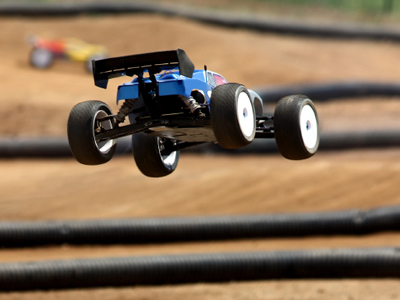
Electricity - Transferring Electrical Energy
This Physics quiz is called 'Electricity - Transferring Electrical Energy' and it has been written by teachers to help you if you are studying the subject at senior high school. Playing educational quizzes is one of the most efficienct ways to learn if you are in the 11th or 12th grade - aged 16 to 18.
It costs only $12.50 per month to play this quiz and over 3,500 others that help you with your school work. You can subscribe on the page at Join Us
Electrical energy can be transferred into a variety of other types of energy. This transfer is never one hundred percent successful and there is always some non-useful energy produced or the useful energy is lost into the surroundings and is therefore wasted. Take for example a radio. This is designed to transfer electrical energy into sound energy. As the electricity passes through the wires, circuit boards and other components, some of the original electrical energy is transferred into heat energy. This heat energy is not actually required to produce the sound energy so it is regarded as wasted energy.
All the energy used on planet Earth can be traced back to the Sun, the Moon and the stars. Take fossil fuels for example.
These are formed from dead plants and sea creatures that lived millions of years ago. The plants grew because they used light energy from the Sun to live and grow. The sea creatures that died to form oil were part of food webs, based on producers. Where do producers get their energy? The Sun. Renewable forms of energy almost all rely on the Sun. Some use the Sun's energy directly like photovoltaic panels that produce electricity (light) and solar panels to produce hot water (heat). Others use the Sun's energy indirectly, for example, generation of electricity using wind and waves relies on the weather. What drives our weather systems on Earth? The Sun of course.
But what about energy from the stars and the Moon? Nuclear power comes from the heat released when unstable atomic nuclei give off radiation to become more stable. This is not solar power but stellar power. Every single atom of the Earth (including the atoms that make up the living organisms that populate our planet) was made when stars exploded early in the life of our universe, billions of years before the Solar System was formed. As for the Moon, that is a major influence on the Earth's ocean tides so together with the Sun, its force of gravity gives us tidal power. The senior high school examiners occasionally like to check whether or not you can trace an energy transfer back to its source so you need to be prepared.
In the exams, the questions can also include energy transfer calculations so you need to be aware of the factors affecting the quantity of energy transferred and be able to calculate it. The equations used in senior high school are not overly complicated, many contain just three variables. In the case of energy transfers, these variables are the power (watts), time (seconds) and of course the energy transferred (joules). If you are required to give an answer in kWh, then you should make sure that the power is in kW and the time is in hours. Power is a measure of how much energy is transferred each second. A device that is capable of transferring one joule of energy in one second has a power of one watt.
Ready for more?
not all...
quizzers. Try to win a coveted spot on our Hall of Fame Page.







